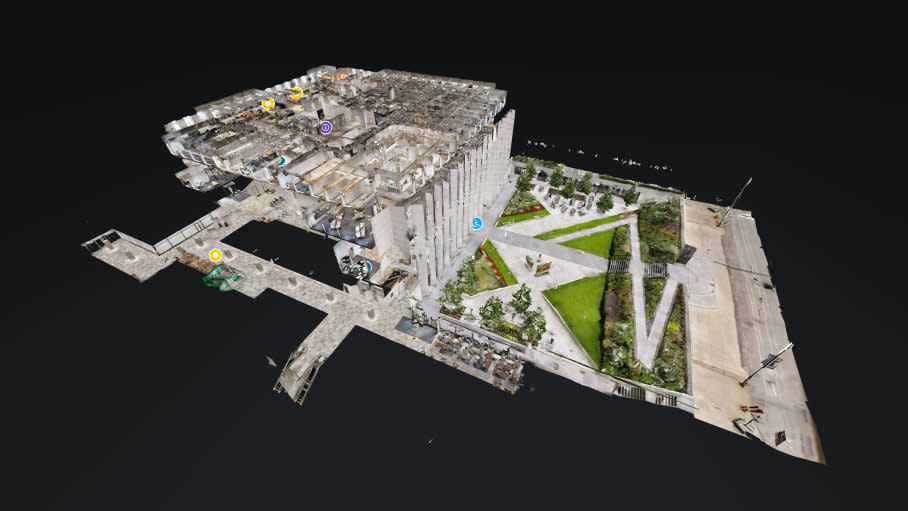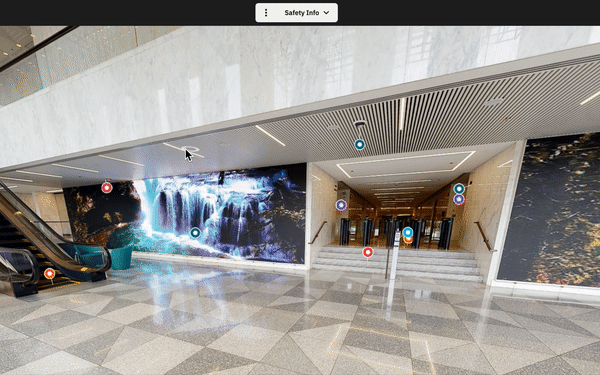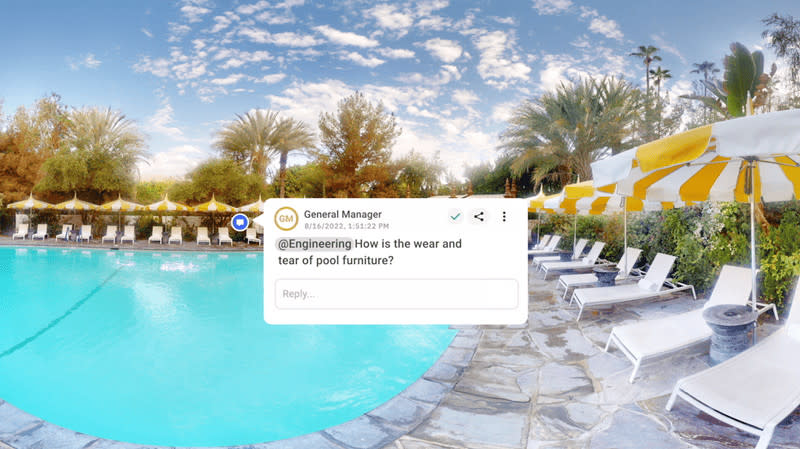How to Create a Digital Twin of a Building (+ Tool to Build Accurate Virtual Replicas)
Digital twin technology is finding powerful use cases across industries. In the manufacturing and AEC (architecture, engineering, and construction) sectors, digital twins of buildings give teams a deeper understanding of their physical space across its lifecycle — from initial designs to construction progress, then ongoing use and maintenance.
In this article, we’ll explore how teams can get started creating digital twins — and how a trusted partner like Matterport can simplify the process. With Matterport in their corner, teams across AEC and manufacturing industries are empowered to capture, edit and share photorealistic 3D scans of AEC projects and collaborate using these virtual representations of their properties.

What is a digital twin of a building?
A digital twin of a building is an immersive 3D virtual replica of a physical property. At the most basic step, Matterport digital twins are generated from photos by AI to render dimensionally accurate, navigable models of the real world. The term digital twin is very broad, though, and can also refer to highly integrated IoT (Internet of Things) and systems data that offer real-time and even predictive modeling based on the information plumbed into them.
Examples include sensor data like temperature or moisture, RFID data like employee foot traffic and badge entry, and geolocation tracking of vehicles or supplies. Ideally, the two are used in harmony so that the people running businesses and making decisions can see the integrated system information they need in the context of the physical space it’s measuring to make well-informed and fast decisions.
Examples of digital twin use cases can be seen across a variety of industries. From real estate to facilities management, digital twins in manufacturing and businesses of all shapes and sizes are unlocking the power of virtual 3D models, keeping them informed across the building lifecycle.
But capturing the built environment is particularly useful for AEC and manufacturing teams who want to quickly understand and communicate spatial information, often at factories or job sites across the state or country. Fortunately, platforms like Matterport make it easy to create your initial digital twins.
Benefits of creating a digital twin
The future of smart building starts with 3D digital twins. Whether you’re looking to install a new HVAC system or update your building to align with new sustainability standards, digital twins that integrate the visual space with live system data give your team the immersive, photorealistic view needed to improve collaboration and decision-making.
Here are a few benefits of digital twins that manufacturing and AEC teams will enjoy when they embrace the power of the visual digital twin before system integration is even included.
Streamlined project management: Teams are able to get started with projects faster and complete them on a faster timeline and meet projected milestones with help from a shareable, dimensionally accurate, digital model of their physical environment.
Reduced site visits: With a 3D digital replica of your building on hand, you won’t need to frequently visit your property to keep up with construction project progress or space planning.
Easier communication with clients or operators: Digital twins promote connectivity between project stakeholders and speed up Manufacturing workforce training and communication. For instance, if you want to show your client the latest milestone in your renovation project, all you have to do is send them a recently created digital twin of the updated property. Industrial operators can access a digital twin on their manufacturing floor tablet for immediate reference about an area.
Increased sustainability: Energy efficiency isn’t just good for the planet — it’s also cost-effective. Digital twins enable property and project tours without the need for travel or commutes.

Building a digital twin in 9 steps
To build a digital twin, start by creating a virtual model of the physical asset using data from sensors, CAD files, or BIM software. Integrate real-time data streams for monitoring and analysis, then apply algorithms for predictive maintenance and performance optimization.
But let’s review these steps a bit more closely:
Define objectives: Clearly outline the purpose of the digital twin and determine what aspects of the physical asset you want to replicate, and what functionalities you need from the digital twin.
Gather data: Collect relevant data about the physical asset. This may include architectural drawings, sensor data, IoT device information, and other relevant data sources.
Choose the right tools: Select appropriate tools and software for building and managing the digital twin and consider factors like compatibility, ease of use, and scalability.
Create a virtual model: Use CAD software or other modeling tools to create a virtual representation of the physical asset. Ensure that the model accurately reflects the geometry, dimensions, and features of the real-world asset.
Integrate data: Incorporate real-time data streams from sensors and other sources into the digital twin, which may involve setting up APIs or other data integration mechanisms to ensure seamless data flow.
Implement analytics: Implement analytics and visualization tools to analyze the data collected by the digital twin. This enables monitoring, diagnostics, and predictive maintenance capabilities.
Validate and test: Validate the accuracy and functionality of the digital twin through testing and simulation, and ensure that it behaves as expected and provides actionable insights.
Iterate and improve: Continuously iterate and improve the digital twin based on feedback and changing requirements. Update the model, data integration, and analytics components as needed to enhance performance and usability.
Deploy and monitor: Deploy the digital twin in operational environments and monitor its performance over time. Regularly review and update the digital twin to ensure it remains aligned with evolving needs and conditions.
How to create a digital twin of a building using Matterport
Creating a digital twin of a building might seem like a complicated, time-intensive task. That’s why Matterport is summarizing the whole process, from capture to digitization. Once you’ve picked a capture device (ie, a camera), you can just download the Matterport app, choose a subscription plan, and have a digital twin ready to go within 48 hours of the capture.
Here are the three simple steps to building digital twins in Matterport:
Capture
A variety of digital cameras can capture a digital twin — even the phone in your pocket. If you’re looking to get started quickly, simply download the Matterport app and start capturing. For smoother scanning of your building, Matterport Pro Series cameras can bring your indoor and outdoor spaces to life. Or you can work with one of Matterport’s Capture Technicians to scan the space that becomes your digital twin. Spaces larger than a typical residential home are good candidates for hiring a service provider, as high-quality DIY or phone capture can be time-intensive.
Edit and document
Once you’ve captured your space and the digital twin is rendered within 48 hours, you can optimize and annotate it as you see fit. This might include adding measurements, tags, or notes that will be useful down the road. And Matterport integrates with existing software to help you get the most out of your building digital twin. For instance, architecture teams can quickly purchase BIM files or digital floor plans to streamline modeling and drawing time.
Share and collaborate
Matterport makes it easy to share your digital twin with other people on your team, clients, or even the entire employee base of a company, making collaboration simple. Matterport’s digital twins can also be added to your real estate or retail website easily, helping you connect with customers and improve their experience.
For detailed information on building digital twins with Matterport, check out the Matterport Help Center.

